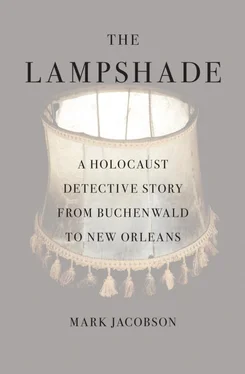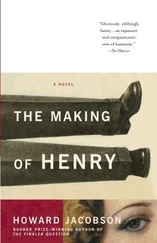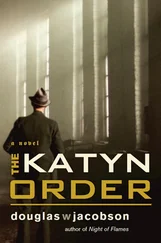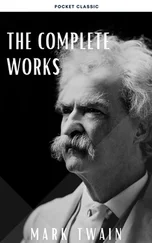“The fact is,” Stephanie said, “black people just don’t do death like white people. A white person dies, and at least as far as the funeral part is concerned, it is a two-day thing. Black people need more than that. They have to have a week, even more. In New Orleans it is more complicated. There are all kinds of special family requests. Some might need a jazz funeral. This isn’t just for show. They need these things and it is our job to give it to them. That’s why we have to have a closer relationship with our clientele. People know us and we know them, for generations. We’re not just someone you get out of the phone book at the last minute and we show up at the door with a shovel.”
This was why, Stephanie said, the Rhodeses and the other famous funeral families, the Charbonnets, the Labats, the Glapions—a large portion of the “aristocracy” of Creole New Orleans—banded together with other black undertakers around the state to “make sure this Katrina burial happened, and it happened the right way … because this has been a nightmare, from even before the storm came ashore.”
Three years on, the episode continued to haunt and infuriate her. “We had twelve funerals booked for those days, which meant there were several bodies already in house, aboveground. But once Katrina came, we couldn’t get them buried. Everyone—the grave diggers, the cemetery people—were getting out. Then came the floods. What were we supposed to do then? But when people leave their loved one to you, that is a bond that must be taken seriously. When everyone was running for their lives, we were trying to save the dead.”
This meant, Stephanie said, keeping the bodies out of the water and transporting the ones who couldn’t be buried in New Orleans to the Rhodes Facility in Baton Rouge. “We stayed in the funeral home for twenty-one straight days, my family and our staff. Every day we dressed in our normal business clothes because you’ve got to provide confidence, make people understand that no matter what happens, you are going to remain professional, that we are going on.
“What I’m talking about here is not just business but continuity between life and death. You can’t separate those two things. If you ask me, that was one of the main things that went wrong during Katrina: making everyone leave, keeping them out of town for weeks. It was that displacement that cut the cord a lot of people had with New Orleans. There’s lots of people who now live in Atlanta. Ask them where’s their home and they’ll say New Orleans, but they’re in Atlanta. That’s the real disaster, because things like Katrina had happened before, maybe not as bad, but we never left, and we survived. We would have survived this, too.”
It was during this period that the Rhodes family and others in the New Orleans undertaker community met with state and federal officials in Baton Rouge to talk about what to do with the Katrina dead, several of whom were still locked in attics or floating in the floodwaters.
“We sat down with people from Governor Blanco’s office, and Louis Cataldie, the state medical examiner,” Stephanie said. “It was like talking to the wall. I thought it would be obvious: we’re from New Orleans, we know New Orleans, we’ve been dealing with New Orleans dead for a hundred years. Once we tried to explain what could be done and how much it would cost, they threw up their hands and said, ‘Oh, so this is about money.’ I was shocked that they would think that. As if we were trying to make a buck off the misery of people we grew up with. The next thing I know they’ve hired Kenyon, from Houston, it’s a done deal. What a mess. In Iraq they might have had Halliburton, but here in New Orleans we had Kenyon.”
Stephanie Rhodes-Navarre was alluding to charges of cronyism involving Kenyon International’s then parent company, Service Corporation International (SCI), the Texas-based “end-of-life” concern, which under its various “Dignity” brands owns more than half of all funeral homes and cemeteries in America. This success has no doubt been aided by the political connections of Robert Waltrip, the longtime (four decades and counting) CEO of SCI. A venerable member of the Bush family inner circle of financial backers, Waltrip has contributed mightily to the presidential library of George H. W. Bush as well as the gubernatorial and presidential campaigns of George W. Bush. Despite this access to power, many claimed SCI’s performance during Katrina left much to be desired.
In the fractious two months of Kenyon’s employment by the State of Louisiana, the company recovered a total of 535 bodies, for which it charged $6 million, or over $11,000 per body. Expensed items such as $14,000 for beef jerky raised eyebrows. According to many relief workers, Kenyon’s $800-a-day “search and recovery specialists,” while expert in such incidents as plane crashes, were unfamiliar with New Orleans; mistakes in noting where bodies were found made identification more difficult. There was also the question of why the state would do business with SCI to begin with, or if it was even aware of Kenyon’s parent company’s legal troubles. In December 2003, the firm agreed to a payment of $100 million to settle a case involving mishandling of the dead at two Jewish cemeteries they owned in Florida. According to the suit, SCI employees routinely buried people in the wrong place, broke open vaults, and in some instances removed bones from gravesites and tossed them into maintenance yards.
On August 28, 2008, with the Rhodes family running things, the burial of Katrina’s last victims came off without a hitch. One by one the hearses pulled up to the arched wrought-iron gateway of Charity Hospital Cemetery and dispatched their cargo. The metal caskets, each topped with a single red rose, were wheeled up the bank of mausoleums. Behind the pallbearers marched a six-piece brass band led by local legend Lionel Batiste, a sticklike man of indeterminate age wearing a sash saying “Jolly Bunch” and twirling a cane. When the coffin was positioned in one of the drawers of the mausoleum—a modified version of the “oven vault” tomb often accorded poor people in New Orleans—the band began to play the spiritual “Just a Closer Walk with Thee.” Once the coffin was pushed into its space, a board was affixed to the open end of the mausoleum, the seams caulked with plastic sealant pumped from industrial-sized tubes. The board was then covered with a granite slab, which was screwed into place.
When the last of the bodies were pushed into the mausoleum, Stephanie Rhodes-Navarre’s sister Joan, who’d been up since four in the morning, took a deep breath. “It went good,” she pronounced, looking exhausted. “Everyone got their flower, everyone got their music.”
As people were packing up, I chatted with the trumpeter from the band, whose standard brass band cap was emblazoned with the word TREME above the visor. Asked how many times he’d played “Just a Closer Walk with Thee” in his life, he said, “Damn, I just done it a hundred times today. Altogether, might be a million.” Did he ever get tired of it? He shook his head.
“Why should I get tired of it? If you’re playing funerals, sending people home, what would you play but ‘Just a Closer Walk with Thee’? That’s the gig, man.”

Funeral band for Katrina’s unclaimed dead, August 28, 2008
Now that Washington and Jerusalem had rejected the shade, there was a case to be made that it belonged in New Orleans, along with the rest of the unclaimed. This topic had come up earlier in the day, when I ran into Frank Minyard, the parish coroner, who was serving as the president of the Katrina Memorial effort. Scheduled to speak and play his trumpet the next day at the public ceremony, Minyard had come over “to pay my respects.” Attired in an electric blue shirt and baggy nautical pants, the coroner had a wraithlike aspect to him as he beckoned me toward a lone gravestone just inside the cemetery’s iron gate.
Читать дальше













